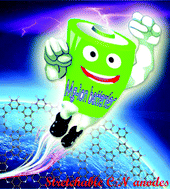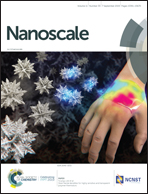Mechanical deformation induced charge redistribution to promote the high performance of stretchable magnesium-ion batteries based on two-dimensional C2N anodes†
Abstract
Stretchable batteries play a central role in stretchable electronics such as healthcare devices and sensors. However, challenges in stretchable batteries, such as unstable performance during the deformation process and their mechanical resistances, slow down their applications. In this paper, by adopting state-of-the-art first-principles calculations, the high performance of two-dimensional (2D) nitrogenated holey graphene C2N based stretchable magnesium-ion batteries (MgIBs) and its origin are determined. Their maximum capacity and average open circuit voltage are 1175 mA h g−1 and 0.447 eV, respectively, in the strain-free state, which are much more superior to most of the previously reported 2D anode materials. Mechanical activation is a facile and effective approach to induce charge redistribution to promote their high performance, i.e. their capacities are promoted under large compressive and tensile strains, whereas their high capacities are maintained under small compressive and tensile strains. The origin of the high performance of stretchable MgIBs is also proposed based on the evidence of electron localization function and charge density difference. Compressive and tensile strains remodulate the structures of electrode materials at the atomic scale and redistribute the electrons at the electronic scale, resulting in the reactivation of adsorption sites in electrode materials and maintaining the high performance of stretchable MgIBs. Additionally, large compressive strains enhance the stability of the C2N/Mg system, further increasing its capacities. The stretchable battery shows a two-stage diffusion mechanism in strain-free and strained states, i.e. in the first stage, the out-of-plane Mg ions diffuse quickly, and in the second stage, the in-plane Mg ions migrate moderately. Compared with the stretchable battery in the strain-free state, its barrier energies are lowered in the strained states. This study provides new insights and microscale mechanisms for non-stretchable and stretchable batteries with high performance and facilitates the innovation of low cost non-stretchable and stretchable batteries with 2D material anodes.



 Please wait while we load your content...
Please wait while we load your content...